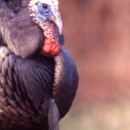
The refuge's paved Visitors Drive, along with 140 miles of earthen and gravel roads, provides access for wildlife observation and photography. All refuge roads are open to vehicular traffic except those marked "Authorized Vehicles Only" or those that have been blocked. All areas of the refuge are open to foot traffic except for those posted "Closed to Public Entry". Please do not block any refuge gates.
Bird watching is a favorite activity at Carolina Sandhills NWR. The refuge is home to nearly 200 species of birds, including the red-cockaded woodpecker and a variety of migratory birds. If you're looking for a place to flesh out your "life list" of birds you've spotted, definitely consider Carolina Sandhills NWR as a prime destination.
- Migrating ducks and geese begin to arrive in October and remain through early March.
- Wood ducks and a small flock of Canada geese are resident on the refuge and nest here in spring and summer.
- Many species of water birds, raptors, and songbirds are found on the refuge throughout the year.
- Spring and fall provide prime opportunities for viewing neotropical migratory birds associated with pine-grassland habitats.
- The refuge hosts the largest population of red-cockaded woodpeckers of any national wildlife refuge national wildlife refuge
A national wildlife refuge is typically a contiguous area of land and water managed by the U.S. Fish and Wildlife Service for the conservation and, where appropriate, restoration of fish, wildlife and plant resources and their habitats for the benefit of present and future generations of Americans.
Learn more about national wildlife refuge . Although the birds are year-round residents, prime viewing occurs in April and May.
Good Birding Spots
The Woodland Pond Trail, located approximately one mile from the Refuge office, is a good area for spotting songbirds, possibly Bachman's sparrow. (Caution: there may be many horseflies in this area during the late spring and summer.)
Several large open fields located adjacent to Visitor's Drive provide opportunities to see raptors, wild turkey, and small mammals. The Oxpen area has a clearly marked observation tower and is good for grassland birds. You can also see raptors in this area. Many birders come to the Refuge specifically to spot a red-cockaded woodpecker. Listen for its distinctive call (sounds like a squeaky toy). Cavity trees for this species are marked with a white band. We ask that you stay at least 200 feet away from the nesting and roosting trees of the red-cockaded woodpecker and use binoculars or a spotting scope to view these birds.



